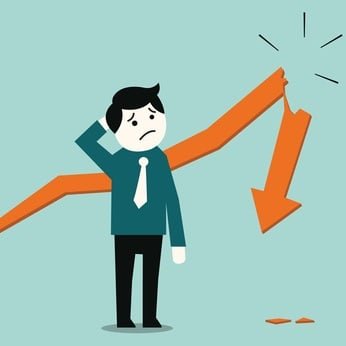The history of maintenance, as a structural part of companies, dates from the very moment of the appearance of machines for the production of goods and services. The appearance of the first maintenance organizational systems to support machines is recognized since the beginning of the 20th century, in the United States, where all solutions to failures and unforeseen equipment stops are solved via corrective maintenance.
As the industry evolved, due to the public’s demands for greater volumes, diversity and quality of products, the machines became increasingly complex, which is why their importance increased in the production system. In this way, the concept of preventive maintenance was born, which in the decade of the twenties (20), was practically accepted as a task that, although expensive, was necessary.
Approximately, in the last three decades due to technological, organizational, economic, social and human advances, a large number of industries have arisen in which the competitive factor and the quality of the products take a great boom, in order to generate greater states of profit, where maintenance tasks evolved from a cost center to an integral system of company competitiveness.
These advances in maintenance tasks allowed the development of studies in the area of equipment availability and reliability so that they work in operating conditions for as long as possible. In this regard, some experts define reliability as “the probability that an object or system operates under normal conditions during an established period of time, the parameter that identifies reliability is the mean time between failure, that is, they are lapses of times between one failure and another.
That is to say, reliability studies are responsible for detecting equipment failures. They start either due to not having received maintenance, fortuitous events, or too much time of use. However, this analysis would be limited if we consider that man intervenes in maintenance tasks, producing interactions with the mechanical component that influences the operation of equipment and systems. Due to the high technological level of automation, it is the personnel in charge of the equipment who maintain control, surveillance, recovery and, of course, maintenance functions.
For a long time, reliability studies focused on the analysis of component failures, leaving those related to the human part in the background. However, currently avoiding or reducing human errors constitutes one of the greatest challenges in engineering industry. This is due, among other reasons, to the growing concern about the contribution to the numerous incidents and accidents that they have caused. Out of this need is how failure analysis methods eventually evolved. Here is how.
The failure analysis
The failure analysis of a system entails applying cognitive-type evaluation for both mechanical and human skills an advanced version is metacognition. It is a word formed by “meta” that means “beyond” and cognition that comes to connote “knowledge”, which means self-regulated knowledge about the cognitive processes that the individual possesses. Metacognition studies have advanced not only in the field of education, but also in decision-making and problem solving at work, either individually or in groups. Metacognitive strategies are ways of learning more and better with less effort, where the main objective is to discover ways of studying that improve performance and avoid failure.
However, through diagnostic tests carried out on the students of the maintenance optimization curricular unit, deficiencies have been detected in effectively solving the problems posed, among which can be cited: distraction, deficiencies in using strategies in accordance with the information provided, lack of mastery of prior knowledge to perform the appropriate failure analysis and this is reflected in the low performance and repetition of the subject.
Defined as what?
Every team is designed according to a basic function they perform, normally the performance of a team can be classified as inherent performance, that is, what the team is capable of providing. Maintenance is capable of restoring the inherent performance of the equipment, if it is not as desired, the expectation is reduced or modifications are introduced. When a piece of equipment does not perform as intended, the term failure is used to identify that situation. This can represent: interruption of production; operation in unstable regime; fall in the quantity produced; affectation or loss of the quality of the product and/or loss of the control or protection function.
Failure analysis is defined as “the collection, analysis, review and classification of failures to determine trends and identify the poor performance of parts and components of a system”, however, some define failure analysis as an activity aimed at discovering and eliminating its root cause, emphasizing that it is a complex task that requires several stages, agents, and methodologies.
After all, all failure analysis methods begin with a broad view, considering all the components (integration) to explore possibilities and then concentrating on some of them (disintegration) and studying qualitatively and quantitatively and so on until the specific objectives of the study are achieved.






